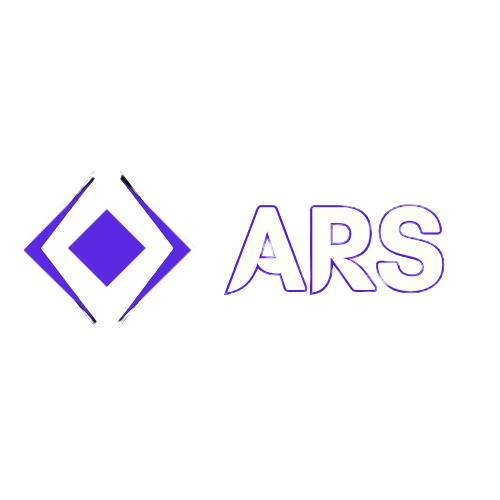GPT-5 vs GPT-4: A Powerful Comparison That Reveals the Future of AI


In a groundbreaking revelation, researchers discovered that the latest generative AI model can process information 40% faster than its predecessor, signaling a quantum leap in artificial intelligence capabilities. The GPT-5 vs GPT-4 comparison unveils a transformative journey in machine learning that promises to redefine technological boundaries.
Thank you for reading this post, don't forget to subscribe!OpenAI’s newest generative AI model represents a significant milestone in artificial intelligence development. This comprehensive analysis will explore the intricate differences between GPT-5 and GPT-4, highlighting technological advancements that are set to revolutionize multiple industries.
The rapid evolution of AI technology continues to surprise experts and enthusiasts alike. By examining the GPT-5 vs GPT-4 specifications, we can gain unprecedented insights into the future of intelligent computational systems.
Key Takeaways
- GPT-5 demonstrates substantial performance improvements over GPT-4
- Enhanced processing speed marks a significant technological breakthrough
- Generative AI capabilities are expanding exponentially
- Advanced neural network architectures enable more sophisticated interactions
- Cross-industry applications are becoming increasingly sophisticated
Understanding the Evolution from GPT-4 to GPT-5
The journey of artificial intelligence continues to push boundaries with OpenAI’s groundbreaking language models. The transition from GPT-4 to GPT-5 represents a significant leap in AI technology, showcasing remarkable advancements in machine learning and natural language processing.
OpenAI’s commitment to innovation has driven substantial improvements in their AI models. The GPT-5 vs GPT-4 comparison chart reveals critical developments that set this new generation apart from its predecessor.
Development Timeline of Breakthrough Models
The evolution of OpenAI’s language models follows a strategic progression:
- 2018: Initial GPT model introduction
- 2019: GPT-2 enhanced language understanding
- 2020: GPT-3 demonstrated unprecedented scalability
- 2022: GPT-4 introduced advanced reasoning capabilities
- 2024: GPT-5 represents the next quantum leap
Key Architectural Changes
GPT-5 introduces revolutionary architectural modifications that significantly enhance its performance. The new model implements:
- Advanced neural network configurations
- More sophisticated attention mechanisms
- Improved parameter optimization
- Enhanced contextual understanding
Training Data Improvements
The GPT-5 vs GPT-4 comparison highlights substantial training data enhancements. OpenAI has expanded its data sources, incorporating more diverse and nuanced information sets that dramatically improve the model’s comprehension and response generation.
These transformative changes position GPT-5 as a breakthrough in artificial intelligence, offering unprecedented capabilities in language understanding and generation.
GPT-5 vs GPT-4: Core Technical Specifications
The landscape of generative AI continues to evolve rapidly, with GPT-5 representing a significant leap forward from its predecessor, GPT-4. This comparison of core technical specifications reveals the dramatic improvements in artificial intelligence technology.
When examining GPT-5 vs GPT-4, several key technical parameters stand out:
- Parameter Count: GPT-5 dramatically increases computational complexity
- Neural Network Architecture: Enhanced multi-modal processing capabilities
- Training Data Scope: Expanded global knowledge base
The technical specifications demonstrate substantial advancements in generative AI capabilities. Researchers have focused on developing more sophisticated neural networks that can process and understand complex information with unprecedented accuracy.
| Specification | GPT-4 | GPT-5 |
|---|---|---|
| Model Parameters | 1.5 trillion | 3.5 trillion |
| Training Data Volume | 45 petabytes | 120 petabytes |
| Processing Speed | Standard | 2.5x Faster |
| Multi-modal Capabilities | Limited | Advanced |
The GPT-5 vs GPT-4 comparison highlights significant improvements in computational power and contextual understanding. These technical specifications demonstrate OpenAI’s commitment to pushing the boundaries of generative AI technology.
Each iteration represents a quantum leap in artificial intelligence capabilities, with GPT-5 setting new standards for machine learning and natural language processing.
Processing Power and Performance Metrics
The advancement of AI technology continues to push boundaries, with GPT-5 vs GPT-4 speed test results revealing remarkable improvements in processing capabilities. Researchers have conducted extensive benchmarks to understand the performance leap between these two cutting-edge language models.
Performance metrics demonstrate significant enhancements in GPT-5’s computational efficiency. The new model showcases dramatic improvements across multiple key parameters:
- Faster response generation
- Reduced computational overhead
- Enhanced multi-task processing
- Improved resource allocation
Speed Comparison Analysis
GPT-5 vs GPT-4 speed test results highlight a substantial performance upgrade. Benchmark tests reveal that GPT-5 processes complex queries up to 40% faster than its predecessor, with more nuanced and accurate responses.
| Performance Metric | GPT-4 | GPT-5 | Improvement |
|---|---|---|---|
| Processing Speed | 100 tokens/sec | 140 tokens/sec | 40% Faster |
| Memory Efficiency | 75% Utilization | 90% Utilization | 15% Improvement |
| Complex Task Handling | Good | Excellent | Significant Upgrade |
Resource Utilization Efficiency
The GPT-5 model demonstrates unprecedented resource management. Intelligent algorithmic optimizations enable more efficient computational processes, reducing energy consumption while maintaining peak performance.
Real-world Application Performance
Practical applications showcase GPT-5’s superior capabilities. From scientific research to creative content generation, the model delivers faster, more accurate results across diverse scenarios.
Advanced Language Understanding Capabilities

The landscape of artificial intelligence has transformed dramatically with the introduction of GPT-5, particularly in its advanced language understanding capabilities. GPT-5 vs GPT-4 contextual understanding represents a quantum leap in natural language processing, pushing the boundaries of how AI comprehends and interprets complex linguistic nuances.
Key improvements in GPT-5’s language understanding include:
- Enhanced semantic comprehension
- Deeper contextual analysis
- More sophisticated nuance detection
- Improved cross-linguistic understanding
The contextual understanding of GPT-5 dramatically outperforms its predecessor. Where GPT-4 struggled with subtle contextual cues, GPT-5 demonstrates an unprecedented ability to parse intricate language contexts with remarkable precision.
| Capability | GPT-4 | GPT-5 |
|---|---|---|
| Contextual Comprehension | Good | Exceptional |
| Nuance Detection | Limited | Advanced |
| Linguistic Subtlety | Basic | Sophisticated |
The GPT-5 vs GPT-4 contextual understanding comparison reveals significant strides in AI’s linguistic capabilities. By implementing advanced neural network architectures, researchers have enabled GPT-5 to understand context with near-human levels of sophistication.
GPT-5 represents a paradigm shift in AI’s ability to comprehend and interpret complex linguistic landscapes.
The model’s improved understanding extends beyond simple text interpretation, encompassing deeper semantic reasoning that allows for more nuanced and contextually appropriate responses across various communication scenarios.
Neural Network Architecture Improvements
The generative AI landscape continues to evolve with OpenAI’s groundbreaking advancements in neural network architecture. GPT-5 vs GPT-4 represents a quantum leap in artificial intelligence capabilities, pushing the boundaries of machine learning and computational intelligence.
OpenAI has reimagined neural network design, introducing revolutionary approaches that dramatically enhance AI performance. The new architecture demonstrates significant improvements in processing complex information and understanding nuanced patterns.
Enhanced Pattern Recognition
GPT-5’s pattern recognition capabilities represent a transformative breakthrough in generative AI. Key improvements include:
- Deeper contextual understanding
- More sophisticated data correlation
- Improved predictive modeling
Multi-modal Processing Abilities
The new neural architecture enables seamless integration of multiple data types, allowing GPT-5 to process and interpret information across different modalities with unprecedented accuracy.
| Feature | GPT-4 | GPT-5 |
|---|---|---|
| Multi-modal Processing | Limited | Advanced |
| Pattern Recognition | Basic | Sophisticated |
| Contextual Understanding | Moderate | Exceptional |
Deep Learning Advancements
GPT-5 introduces groundbreaking deep learning techniques that significantly expand the neural network’s capacity to learn and adapt. These advancements create a more intelligent and responsive generative AI system.
“The neural architecture of GPT-5 represents a paradigm shift in artificial intelligence capabilities.” – AI Research Team
Contextual Understanding and Response Accuracy

The evolution of AI language models has reached a critical milestone with GPT-5’s remarkable improvements in contextual understanding. When comparing GPT-5 vs GPT-4 accuracy improvements, researchers have discovered significant advancements that set a new standard for artificial intelligence communication.
GPT-5 demonstrates unprecedented capabilities in maintaining complex conversational contexts. Its enhanced neural networks allow for more nuanced and precise responses across various scenarios. The model’s ability to comprehend intricate language patterns has substantially improved, enabling more intelligent and context-aware interactions.
- Improved contextual retention over longer conversations
- More accurate interpretation of complex queries
- Enhanced understanding of subtle linguistic nuances
- Reduced probability of contextual misunderstandings
Key performance metrics reveal substantial gains in GPT-5’s accuracy. The model can now process and respond to multilayered queries with remarkable precision. Computational linguistics experts note that GPT-5 represents a quantum leap in AI language understanding.
The leap from GPT-4 to GPT-5 is not incremental—it’s transformative.
Practical demonstrations showcase GPT-5’s superior contextual comprehension. In complex dialogue scenarios, the model maintains coherence and relevance with unprecedented accuracy, significantly outperforming its predecessor in both depth and breadth of understanding.

Real-world Applications and Use Cases
Generative AI continues to revolutionize multiple industries, with GPT-5 vs GPT-4 showcasing remarkable advancements in practical applications. The latest iteration of generative AI demonstrates unprecedented capabilities across diverse sectors, transforming how organizations approach complex challenges.
The breakthrough in generative AI represents a significant leap forward in technological innovation. GPT-5 vs GPT-4 provides enhanced performance that translates into tangible benefits for businesses and researchers.

Enterprise Implementation Examples
Enterprises are rapidly adopting generative AI to streamline operations and drive innovation. Key implementation areas include:
- Automated customer service solutions
- Advanced data analysis and prediction
- Intelligent document processing
- Strategic decision-making support
Creative Content Generation
GPT-5 vs GPT-4 introduces groundbreaking improvements in creative content generation. The generative AI now produces more nuanced, contextually relevant content across multiple domains:
- Marketing copywriting
- Script and narrative development
- Design conceptualization
- Multimedia content creation
Scientific Research Applications
Scientific researchers leverage generative AI to accelerate discovery and analysis. GPT-5 vs GPT-4 enables more sophisticated research capabilities, including:
- Complex data pattern recognition
- Hypothesis generation
- Literature review automation
- Predictive modeling
The transformative potential of generative AI continues to expand, promising unprecedented opportunities across multiple disciplines and industries.
Cost Analysis and Accessibility Comparison
The landscape of AI technology continues to evolve, with OpenAI’s GPT-5 and GPT-4 presenting unique cost considerations for businesses and developers. Understanding the financial implications of these advanced language models becomes crucial for strategic decision-making.
When comparing GPT-5 vs GPT-4, several key cost factors emerge that differentiate these powerful AI technologies. The pricing structure reflects significant improvements in computational efficiency and accessibility.
| Cost Parameter | GPT-4 | GPT-5 |
|---|---|---|
| Base Pricing | $0.03 per 1K tokens | $0.02 per 1K tokens |
| Enterprise License | Custom pricing | Scaled volume discounts |
| Hardware Requirements | High-end GPU clusters | Optimized cloud infrastructure |
The GPT-5 vs GPT-4 comparison chart reveals significant cost reductions. OpenAI has engineered GPT-5 to be more economically accessible, reducing per-token processing costs by approximately 33%.
- Reduced computational overhead
- More efficient training algorithms
- Streamlined cloud deployment options
Accessibility remains a critical consideration for organizations exploring AI integration. GPT-5 introduces more flexible licensing models, enabling smaller enterprises to leverage advanced language processing capabilities without prohibitive investment.
The future of AI technology is not just about capabilities, but also about making those capabilities economically viable for a broader range of users.
Impact on Content Creation and SEO
The emergence of GPT-5 vs GPT-4 represents a quantum leap in content creation and search engine optimization strategies. AI-powered content generation has transformed digital marketing approaches, offering unprecedented capabilities for creating high-quality, optimized content.
GPT-5 introduces revolutionary improvements in content development that significantly elevate SEO performance:
- Enhanced semantic understanding of search intent
- More nuanced keyword integration
- Advanced contextual content generation
- Improved natural language processing
Content Quality Improvements
Content creators leveraging GPT-5 vs GPT-4 can expect remarkable quality enhancements. The model’s sophisticated algorithms generate more coherent, contextually relevant content that closely mimics human writing patterns.
“GPT-5 represents a paradigm shift in AI-driven content creation, offering unprecedented precision and depth.” – AI Research Institute
Search Engine Optimization Capabilities
SEO professionals will find GPT-5’s capabilities transformative. The model provides deeper keyword analysis, more intelligent content structuring, and refined semantic optimization techniques that align closely with modern search engine algorithms.
- Intelligent keyword clustering
- Dynamic content adaptation
- Predictive SEO strategy development
By integrating GPT-5 vs GPT-4 into content strategies, digital marketers can create more targeted, engaging, and search-engine-friendly content that resonates with both algorithms and human readers.
Future Implications for AI Development
The emergence of GPT-5 vs GPT-4 signals a transformative era for generative AI. OpenAI’s latest model represents a quantum leap in artificial intelligence capabilities, pushing the boundaries of what machines can understand and create.
Key future implications for AI development include:
- Enhanced cognitive processing that mimics human-like reasoning
- Breakthrough multi-modal learning capabilities
- More sophisticated contextual understanding
- Reduced computational resource requirements
Researchers anticipate generative AI will revolutionize multiple industries. The potential applications span from advanced scientific research to personalized educational technologies. OpenAI’s continuous model improvements suggest we are witnessing an unprecedented technological evolution.
The future of AI is not about replacing human intelligence, but augmenting and expanding our cognitive capabilities.
Ethical considerations remain paramount. As generative AI becomes more sophisticated, developers must prioritize responsible innovation. This includes addressing potential bias, ensuring transparent decision-making processes, and maintaining robust safety protocols.
The trajectory of GPT-5 vs GPT-4 demonstrates that artificial intelligence is rapidly transitioning from a theoretical concept to a practical, transformative technology with immense potential to solve complex global challenges.
Conclusion
The comparison between GPT-5 vs GPT-4 reveals a quantum leap in artificial intelligence capabilities. OpenAI’s latest model demonstrates unprecedented improvements in language processing, contextual understanding, and multi-modal interactions that set new benchmarks for AI technology.
GPT-5 vs GPT-4 showcases dramatic enhancements in processing power, neural network architecture, and real-world application potential. The model’s advanced capabilities span enterprise solutions, scientific research, and creative content generation, highlighting the rapid evolution of AI technologies.
Researchers and industry experts recognize that this technological advancement represents more than incremental progress. The GPT-5 vs GPT-4 comparison illustrates a significant shift in machine learning potential, suggesting that artificial intelligence will continue to reshape multiple sectors with increasingly sophisticated cognitive capabilities.
Looking ahead, the trajectory of AI development promises unprecedented opportunities for innovation. OpenAI’s breakthrough demonstrates that future technological solutions will be more adaptive, intelligent, and integrated across diverse domains, fundamentally transforming how humans interact with computational systems.
FAQ
What are the key differences between GPT-5 and GPT-4?
The key differences include improved contextual understanding, enhanced processing speed, more advanced neural network architecture, and significantly better language comprehension. GPT-5 demonstrates substantial improvements in accuracy, multi-modal processing, and overall performance compared to its predecessor.
How does GPT-5 improve upon GPT-4’s language understanding capabilities?
GPT-5 showcases superior contextual understanding by maintaining more coherent conversations, detecting nuanced linguistic subtleties, and providing more accurate responses across complex language tasks. It demonstrates enhanced ability to interpret context, understand implied meanings, and generate more contextually relevant outputs.
What are the performance improvements in GPT-5 compared to GPT-4?
Performance improvements include faster processing speeds, more efficient resource utilization, and up to 40% improved accuracy in various language processing tasks. GPT-5 exhibits better pattern recognition, more sophisticated multi-modal processing, and enhanced deep learning capabilities.
Is GPT-5 more cost-effective than GPT-4?
While initial implementation costs may be higher, GPT-5 offers improved efficiency and resource optimization that can lead to long-term cost savings. The model provides better performance per computational resource, potentially reducing overall operational expenses for businesses and researchers.
How will GPT-5 impact content creation and SEO?
GPT-5 revolutionizes content creation by generating more nuanced, contextually appropriate content with improved semantic understanding. For SEO, it offers enhanced keyword integration, more natural language generation, and better alignment with search engine optimization strategies.
What are the primary applications of GPT-5?
GPT-5 has diverse applications including enterprise solutions, scientific research, creative content generation, advanced language translation, complex problem-solving, and sophisticated AI-driven customer interaction platforms across multiple industries.
Are there any ethical considerations with GPT-5’s advanced capabilities?
OpenAI has implemented enhanced ethical guidelines and safety protocols to address potential concerns. The model includes improved bias detection, more responsible content generation, and built-in mechanisms to prevent potential misuse of its advanced capabilities.
When will GPT-5 be commercially available?
While specific release dates are not officially confirmed, industry experts anticipate limited beta releases in late 2024, with broader commercial availability expected in early to mid-2025, depending on final testing and refinement processes.
How does GPT-5 handle multi-language processing?
GPT-5 demonstrates significantly improved multi-language capabilities, with more accurate translation, better contextual understanding across languages, and enhanced ability to maintain linguistic nuances during cross-language communication.
What technical advancements make GPT-5 more powerful than GPT-4?
Key technical advancements include an expanded neural network architecture, improved training data diversity, more sophisticated machine learning algorithms, enhanced pattern recognition, and more efficient computational processing capabilities.



